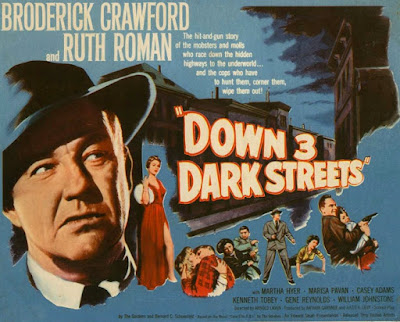Universal
Pictures released this crime film noir based on the popular five-year radio
drama created by Dashiell Hammett. Directed by William Castle, the pacing is slow and offers zero excitement, with a screenplay by Harry Essex and Leonard Lee bearing some responsibility. The script could not be fully clarified without multiple flashbacks. One is a flashback within a flashback. The supporting cast is awarded at least one. At any rate, the frequency disrupts the film's flow. The film eliminates the imagination that radio can generate. Theater attendance made this clear, signaling a follow-up
movie was not in the planning stages.
J. Scott Smart reprises and finishes his role as the well-known private detective with a commonality with Rex Stout's Nero Wolfe, both having a passion for food with waistlines as proof. Smart is not nearly as smart, however. Simple investigative logic is all he needs to solve crimes. He can “cut a rug” on the dance floor and habitually addresses a female or male as “sweetheart.” His assistant is the befuddled and persnickety Clinton Sundberg, responsible for shuttling him around and designing his meals. He is very fastidious concerning meal preparation.
The "Fat Man" is about to partake in a sizable gourmet lunch. A most inopportune time for Jayne Meadows to seek his counsel. She initiates the first flashback to help him understand her backstory. They become
somewhat of a team in tracking down the murder of her boss, a
dentist, and a missing set of X-rays. Thus begins the usual questioning of
intertwined characters. Smart meets
with Julie London on more than one occasion. She provides flashbacks about her husband, Rock Hudson, and his prison stretch from a
million-dollar robbery organized by John Russell. Hudson's
cellmate, Emmitt Kelly, learns of Hudson's demise and wants his share of the loot. A minor detail: Meadows and Hudson use their real first names for their characters, Jane and Roy, as in Roy Scherer Jr.
The performances sway like a pendulum. Meadows seems near-comatose
throughout. London is in the same coma ward, though her coma breaks early. Russell adds interest to his scenes with his menacing brow, which fits a gangster, unlike Hudson, who is miscast. Teddy Hart steals his two scenes with Sundberg as “Shifty,” a short, weaselly, high-voiced Brooklyn informer. He teases Sundberg because he knows it exasperates him. But without a doubt, Marvin Kaplan's brief scene as “Pinkie” swings the pendulum far into the hilarity region. His distinct Brooklyn accent and his melancholy delivery
were legendary. He and his brother-in-law and trucking firm boss, Edwin Max, dislike each other immensely. Max thinks Kaplan is a
dimwit and incapable of a solid day's work. Kaplan's sarcastic banter
with Max is delightful. It is not just for laughs, either. They provide the final clue for Smart to pinpoint the murderer.
Note: Screen Gems created a second potential television series starring Robert Middleton. The never-aired 1959 pilot movie was a lackluster fifty-eight minutes, despite Middleton's suave and commanding performance and a fine turn by his crackling assistant, Tony Travis. This private detective charged $200 a day, indicating Jim Rockford was not keeping pace with inflation.






